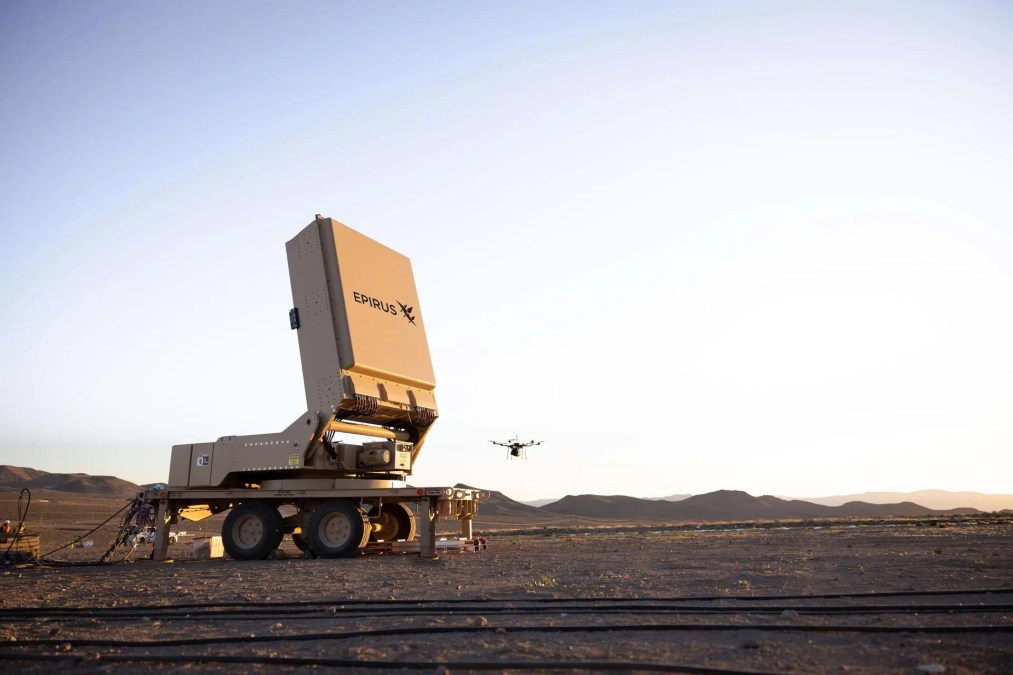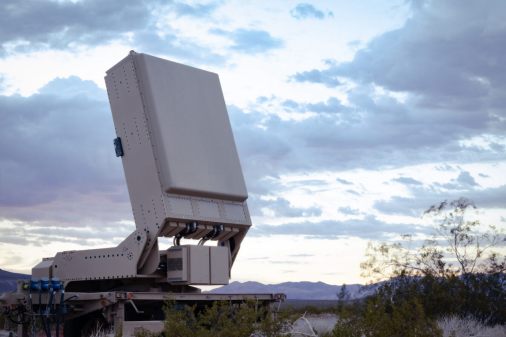JCO to host counter-drone swarm technology demo in pursuit of new capabilities

The next big technology demonstration led by the Defense Department’s Joint Counter-small UAS Office (JCO) will focus on defeating drone swarms, according to the organization’s director.
Plans for the gathering come as the U.S. military, Ukraine and other forces have come under attack by groups of unmanned aerial systems. And the Pentagon is looking for ways to counter the growing threat.
The JCO has been hosting a series of tech demonstrations in recent years. The most recent, known as Demo 4, was conducted in June at Yuma Proving Ground, Arizona. It looked at capabilities that could defeat Group 3 category “one-way attack” drones, also known as kamikaze drones or loitering munitions.
Demo 5, slated for June 2024, will be focused on “counter-swarm” tools, according to slides presented by Maj. Gen. Sean Gainey at the Space and Missile Defense Symposium on Tuesday.
“I essentially sum up the future threat in three words. Speed — because those Group 3s are getting faster … in cruise missile-type attacks that we’re seeing in the [combatant commanders’ areas of responsibility] — and developing capability for that. Mass — whether it’s flying multiple Group 3 [kamikaze drones] to try to overwhelm our operators and our capabilities, or is it a swarm attack where you have several hundreds of quadcopters essentially overwhelming your radars or sensors and your operator — to be able to defeat that capability as we move forward and the complexity of getting after those type targets,” Gainey said at the symposium.
He continued: “And then the last piece is the autonomy. So as the adversary continues to move more and more towards autonomy, our predominantly electronic warfare systems are continuously challenged because it’s a game to try to take what we use predominantly and try to make that not as useful or highly successful.”
A request for white papers related to the demo is expected to be released soon, most likely in the October time frame, according to officials.
The U.S. military needs layered defenses against UAS threats, Gainey noted. The Pentagon is testing and deploying overseas a variety of systems including kinetic interceptors like missiles and gun trucks, electronic warfare tools, and directed energy weapons such as lasers and high-power microwaves.
EW and directed energy weapons, which are relatively inexpensive per shot and possess nearly unlimited magazines, are considered particularly advantageous for defeating drone swarms and small UAS such as quadcopters.
“You won’t have enough interceptors to one-for-one match [the enemy’s drones]. So you have to leverage the EW capability and the high-powered microwave capability that we’re bringing on today,” Gainey said.
New platforms are being put into the field now for operational assessments, he noted.
For example, 10-kilowatt laser weapons have been sent overseas to Africa Command, Central Command and Indo-Pacific Command. And a 20-kilowatt system is being sent to Centcom, according to Gainey.
The “higher the kilowatt, the quicker in most cases, if the beam control is done properly, you will get a quicker defeat on some of these UASs, which allow the operators to move to multiple [targets] and then move to higher-end target sets,” Gainey explained.
High-power microwaves (HPM) are another area “as a department that I felt we had to invest in when we’re looking at the mass and the ability to fry the electronics of these UASs when they’re coming at you in waves, and through a layered approach be able to layer through some of these threat sets and a large amount of volume,” he added.
The Coyote interceptor with an HPM warhead is already in the Centcom region in the Middle East, he noted.
The Army’s Rapid Capabilities and Critical Technologies Office has also purchased prototypes of Epirus’ Leonidas high-power microwave system that can kill drones by zapping their electronics.
“That’s going to show up to … one of our units in the Indo-Pacom area to get it out there and from an operational assessment getting capability that’s, you know, under evaluation — we haven’t gone to a full-rate production — and getting it out there to the warfighter to not only test it for us, but to provide capability to deliver against the adversary,” Gainey said.
During the recent demo at Yuma, the JCO tested Lockheed Martin’s Mobile Radio Frequency-Integrated UAS Suppressor (MORFIUS) — a tube-launched, fixed-wing unmanned aerial system — that can fly close to small drones and attack them with microwave pulses.
“The MORFIUS HPM system essentially flies by, loiters, and any drones that come into its area [it] fries the electronics. And you’ll see the Epirus Leonidas system pretty much doing the same thing, but on a larger scale,” Gainey said.






